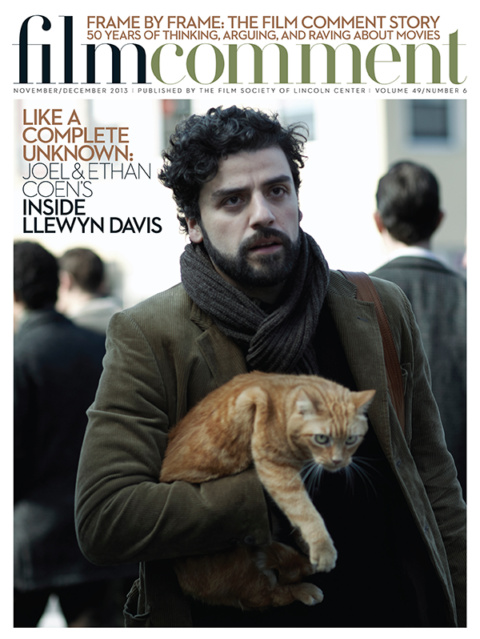Steve McQueen’s 12 Years a Slave, adapted by John Ridley from Solomon Northup’s 1853 memoir, is structured as a peripatetic journey to, and through, hell on earth. After its prologue, the story proper begins when Solomon (Chiwetel Ejiofor) is an almost prosperous free man, living with his wife and three children in Saratoga Springs. In 1841, he is kidnapped, shipped to New Orleans, and sold to the plantation owner Ford (Benedict Cumberbatch). Though appreciated for his talents by the relatively humane Ford, Solomon is eventually transferred to Epps (Michael Fassbender), a brutal alcoholic. Liberation comes finally in the form of an itinerant carpenter (Brad Pitt, the film’s producer, as a folksy Canadian Jesus).

Solomon is McQueen’s appalled witness to savagery as well as his protagonist. He observes the murder of a fellow prisoner on the paddle-steamer and the separating of a slave from her children. He is all but hanged to death by Ford’s foreman Tibeats (Paul Dano). He stumbles upon a lynching in a clearing. He is implicated in the Caligula-esque depravity of Epps and his wife Mary (Sarah Paulson), who drag their slaves from their sleep to make them dance to Solomon’s fiddle and are locked in a sado-masochistic triangle with the teenage drudge Patsey (Lupita Nyong’o).
Through Solomon, then, McQueen forces the viewer to behold the slaves’ degradation, anguish, and physical suffering, just as he did with the Maze Prison’s miasmic squalor in Hunger and the pathological self-loathing of sex addiction in Shame, each film a prolonged howl of despair prompted by the horror of literal or spiritual imprisonment. But in terms of its mise en scène, 12 Years a Slave is more organic and less formally rigorous than Hunger, while eschewing the improvisatory quality that weakened Shame. Consequently, it is McQueen’s most accessible and naturalistic film yet.

That doesn’t mean the British artist-director has strayed into the realm of homily or moralization—or forsaken the use of extended shots. McQueen’s regular cinematographer Sean Bobbitt lingers unflinchingly on the manifold barbarities. When Solomon is hanged by his neck from a bough for hours, only his toes supporting him, the shot is sustained until the sun starts to go down. The most harrowing extended take is devoted to Patsey’s lashing. Solomon’s collusion in this
act recalls the “choiceless choice” of Salamo Arouch, Willem Dafoe’s Auschwitz prisoner in Triumph of the Spirit, who is forced to box against other inmates for the Nazis’ entertainment.
McQueen and his editor Joe Walker, meanwhile, are at their most grammatically eloquent. They interpolate shots, moments, and unexpected scenes to deepen the social context of Solomon’s plight. When he is initially abducted in Washington, D.C., en route to the South, the omniscient camera leaves his cell and looks over toward Capitol Hill to condemn a government still 24 years from outlawing slavery. Later on, Solomon and other slaves stumble upon equally mystified Native Americans (Choctaws probably), sharers in minority persecution. Alfre Woodard has a knowing cameo as a planter’s mistress who schools Solomon in the reality for genteel female slaves: submitting to lust is less onerous than backbreaking work in the fields (Patsey escapes neither).
Ejiofor’s performance is a master class in mortification and outrage. Solomon sometimes flares up, as when he strikes Tibeats and later reprimands Patsey for asking him to assist her in committing suicide, but the actor sustains this stolen man’s sense of trauma throughout. In the first of two twinned close-ups toward the end, Solomon breaks the fourth wall by turning his stare on the audience, directing a j’accuse at all those who condoned or profited from slavery in the past, or who perpetuate or deny racism now.








